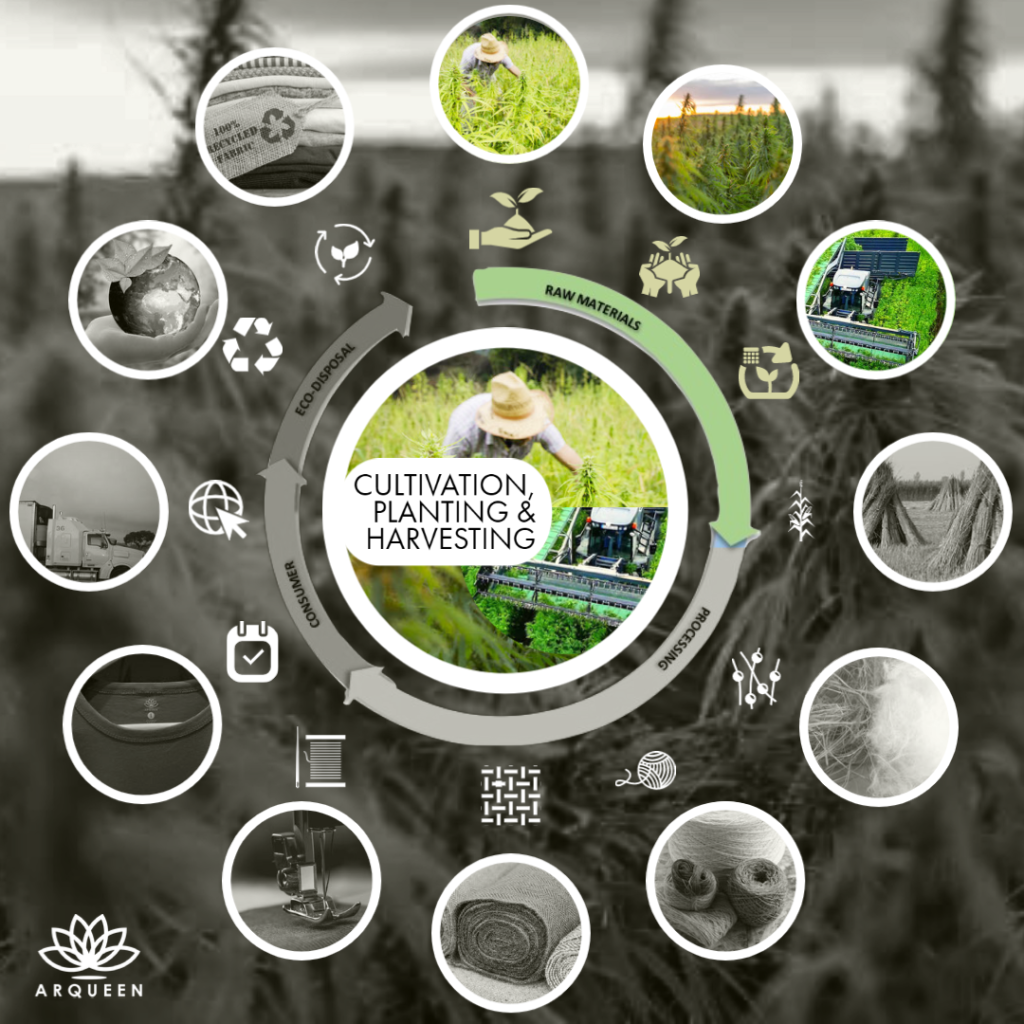As we continue with our series “Fibre to Fashion”, here are some more interesting facts about HEMP fibres and how it is developed from the field to the closet.
For many, hemp is something that is just being discovered as a strong, organic fabric source and health aid. However, humans have been spinning hemp into a usable fibre and utilizing its medicinal benefits for thousands of years! The fast-growing, ultra-durable hemp plant is a variety of cannabis Sativa plant species. Let’s dive into the Handling of Raw Materials.
CULTIVATING
One of the great things about hemp is its ability to thrive in various environments. The main exceptions are high mountain and extreme desert regions. Hemp absorbs what’s in the soil, so growers need to test it before planting the seeds. The soil must not have a high degree of potassium sulphate, sulphur, or rock phosphate.
In general, the growing cycle for hemp is 108 – 120 days but the ideal timeframe for hemp clothing textile is between 80-90 days. Hemp is a relatively easy plant to grow organically because it doesn’t need many nutrients. It is also highly resistant to pests and diseases. Farmers tend to plant seeds densely to get plants with tall, slender stems. Such a crop will have plants with a high amount of fine fibres, ideal for creating fabric.
PLANTING
Any successful farmer will tell you that doing your homework is essential for starting off on the right foot; planning happens before planting! If you’re one of the tons of new farmers interested in breaking into the hemp industry, it’s crucial to understand as much as you can of this rapidly growing industry before you jump in.
Preparing to plant is a process done first on paper and then in the dirt. You need to know your goals and how to best achieve them, then understand your soil and climate conditions, and finally make a plan to manipulate those factors to give your seeds the best opportunity to grow. Once all that work has been done, the actual work in the field can be minimal and relatively simple. Without that forward-thinking, though, poor planting can end your harvest before it even begins.
HARVESTING
After approximately 90 – 100 days in the ground, the hemp plant’s head is usually matured. Growers must closely analyze the crop to see seed heads developing from the bottom and moving up. After maturation, they expose their seeds. Farmers can then air dry them.
Farmers require combines to complete the harvesting process. Organically grown hemp produces around 350 pounds of fibre per acre. Inorganically grown hemp produces twice that amount. Typically, growers can expect anywhere from 1 to 3 tons of hemp fibre per acre.

#canada #hemp #fashion #cultivation #motivation #Sustainable #sustainability #arqueenyyc #calgary #rockyviewalberta #plants #enviroment

